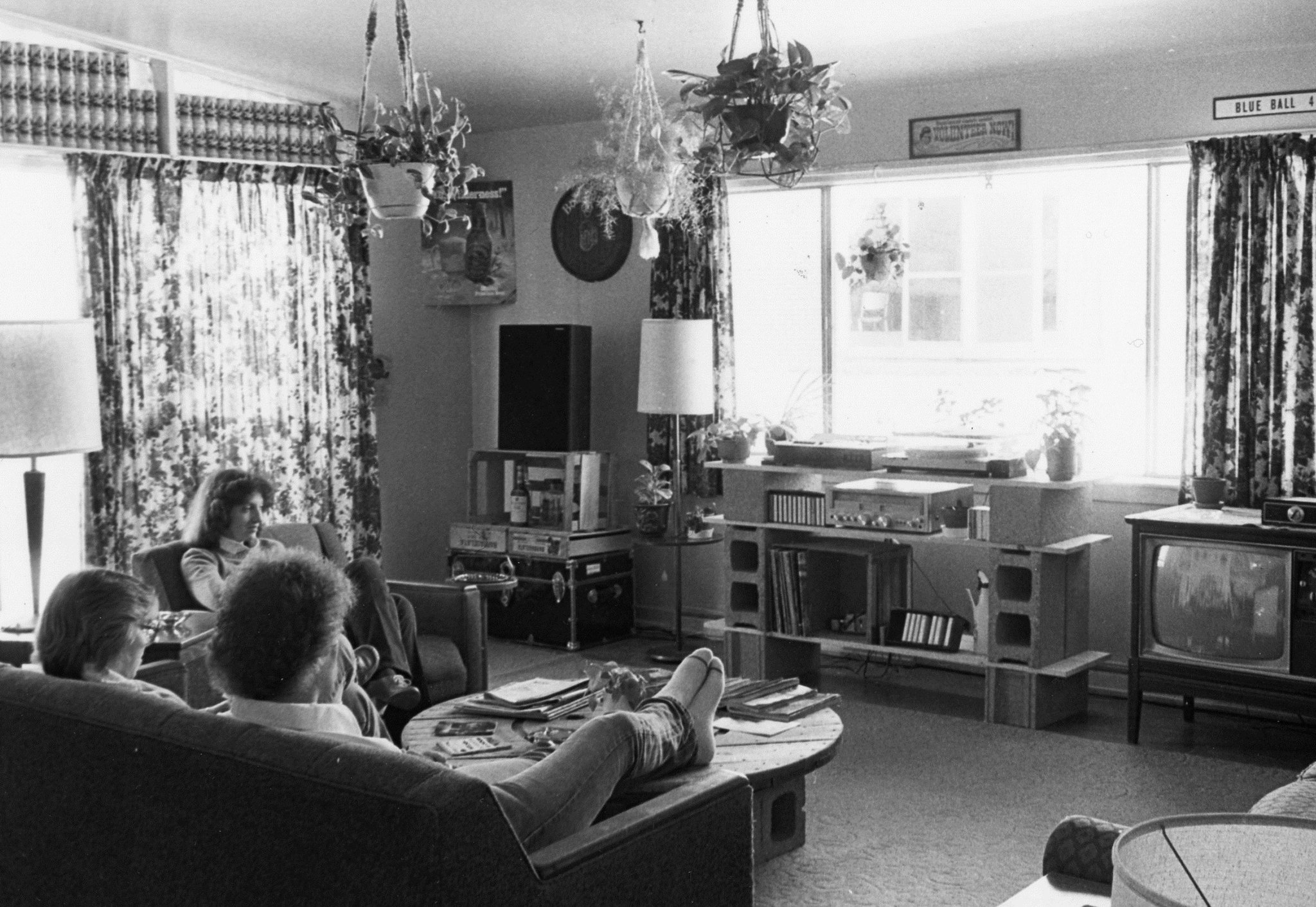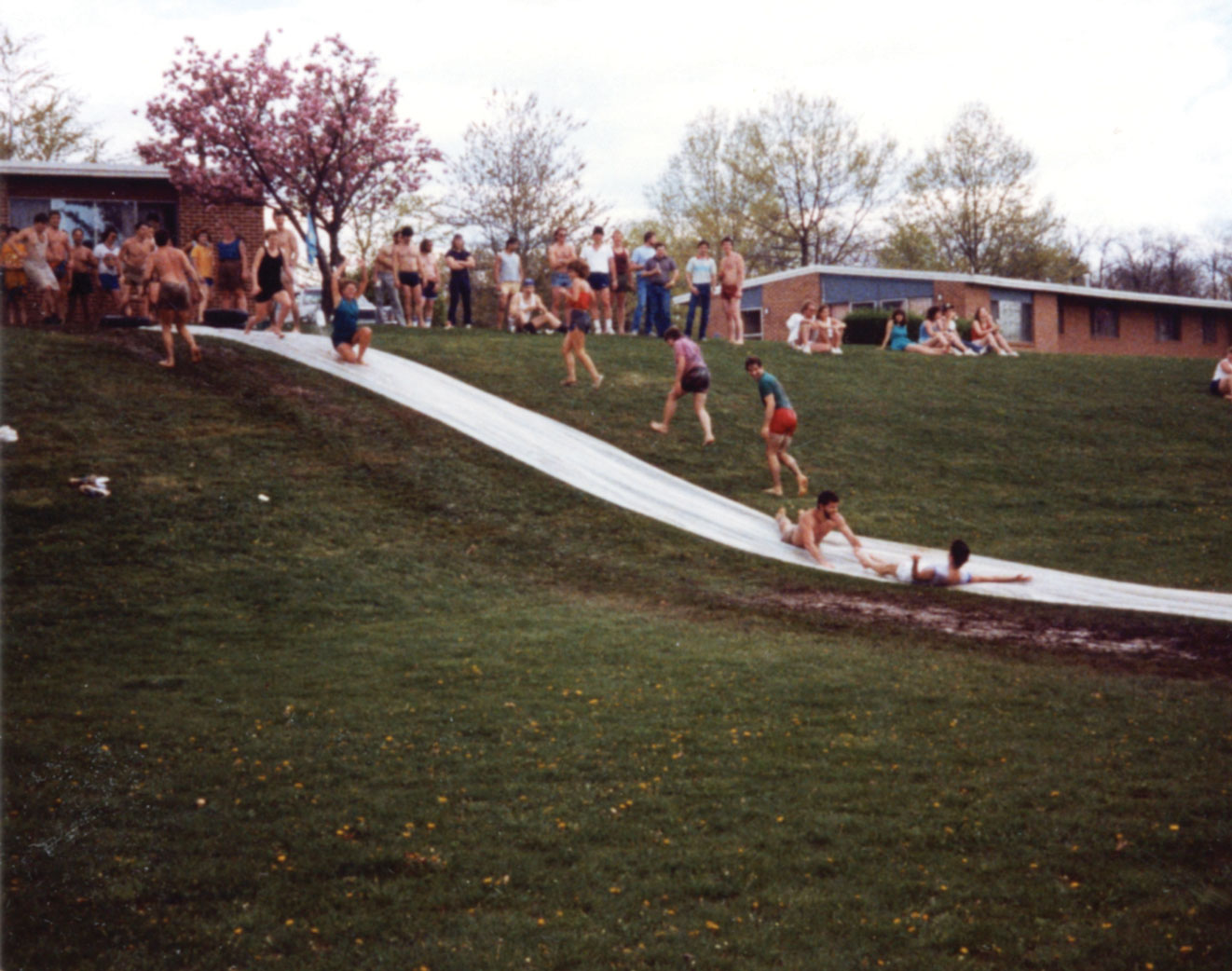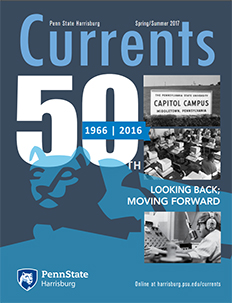
When Penn State purchased portions of the Olmsted Air Force Base from the U.S. Department of Defense for $1 in 1966, the sale included 177.5 acres and 16 buildings; it didn’t include the Meade Heights housing complex on the west side of campus. That was purchased in 1968, increasing the campus to over 217 acres and 90 buildings.
Built in 1960, Meade Heights was originally designed to accommodate officers and their families. The 140 ranch-style houses could accommodate as many as 560 people.
Meade Heights operated as student housing from 1970 to 2002, and was the largest student housing area on campus in its time. A friendly, neighborhood-like community, Meade Heights became known to its residents as a home away from home. The book Penn State Harrisburg, by Heidi Abbey Moyer, archivist and interim director of the Penn State Harrisburg library, described Meade Heights as a “unique ‘learning-living’ environment,” with some houses occupied by students while others were home to faculty and their families.”
The houses were divided into two sides, and eight people could live in each duplex. Homes included three bedrooms, one bathroom, a kitchen, and a
common living area. Because the houses seemed to lack proper insulation for cold weather, a long-standing legend among the residents postulated that the design plans, which seemed to better accommodate warm weather conditions, were accidentally switched with those of Florida’s Homestead Air Force Base.
Embracing the neighborhood-like environment the complex created, Meade Heights had a laundry facility, “Suds City,” and a dining facility. Because Penn State Harrisburg was originally an upper division campus and graduate school, Meade Heights student residents were juniors, seniors, and graduate students; the average age was 26.
According to Paul Levitsky (’79), a former resident, Meade Heights was the best place to live on campus.
“Four students in a three bedroom house was pretty good living for college residency,” he said. “Since all of your neighbors were also college students, no one got upset with parties, blaring music, football games in the yard, late night grilling.”
For recreational purposes, the Meade Heights complex offered students a sand volleyball court, a park dubbed “People’s Park,” and a large, open yard area between Mars Drive and Nelson Drive. Concerts were held in People’s Park as part of the Rites of Spring, a yearly tradition started by students in the 1970s that began as a festival with events such as a free picnic, bonfire, road rally, and games. The Rites evolved to also include mud wrestling and a slip-n-slide.
Another tradition was the forming of social clubs, based in specific houses, Levitsky said. Some of the largest gatherings occurred in these houses.
“There was the beloved bar in the living room that was handed down year to year,” he said. “The entryway at the front door made a great dart lane. There were constant backgammon games played along with card games. There was always loud music in the air …. We worked hard at school and played hard with friends.”

For Ronda Stump (’88), who lived in Meade Heights from 1988 to 1989, some of her fondest memories surround these social gatherings, including when she first met the man who became her husband.
“One Saturday evening in October 1988, my roommates convinced me to go to a Meade Heights party,” she said. “I started talking to a young man who I sort of recognized from Penn State Harrisburg and who I later found out had admired me from afar.”
After exchanging numbers and going on their first date, the pair spent much of their time in the Heights, a place that holds a special place in their hearts.
“Meade Heights is where we met, where I said yes to our first date, where we had our first kiss, and where we spent many, many nights during that first
dating year,” she said. “Yes, it is a special place to us.”
Meade Heights itself was “decommissioned” in 2002. Before it was torn down, alumni were invited back to pay homage. Former residents, nostalgic from fond memories of their time at Meade Heights, returned to campus to take bits of drywall, bricks, and door signs with them as keepsakes.
At “We Are Weekend” in fall 2016, former residents gathered again to tour the complex’s former location and share treasured memories.
Housing Today
On-campus housing today looks quite a bit different from the days of Meade Heights. The Village complex on the east side of campus is home to more than 400 students who live in single-, double-, or triple-occupancy apartment style housing, and double-occupancy suite-style housing for first-year students.
Within these units, Penn State Harrisburg now offers special living options for incoming first-year students. Two themed houses, Sustainability House and Discover House, are accepting applications for the fall 2017 semester.
Sustainability House, designed to engage students in a multidisciplinary study of environmental sustainability, offers seminars, courses, and community and social events for residents. Discover House is designed for students who are undecided in their major or have not identified a career path. A four-part exploration series will familiarize students with resources and academic tools while also exposing them to potential careers and majors.
